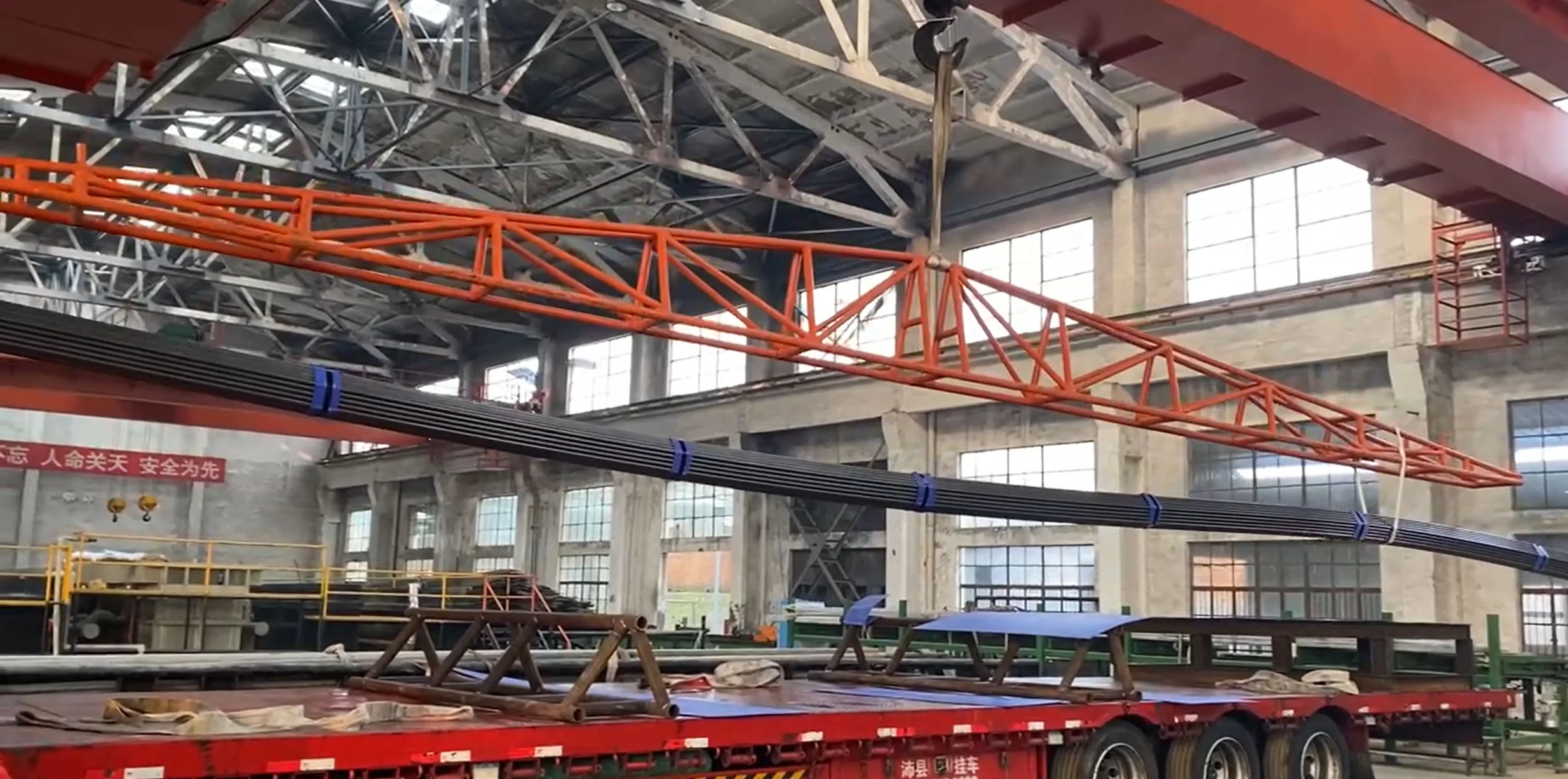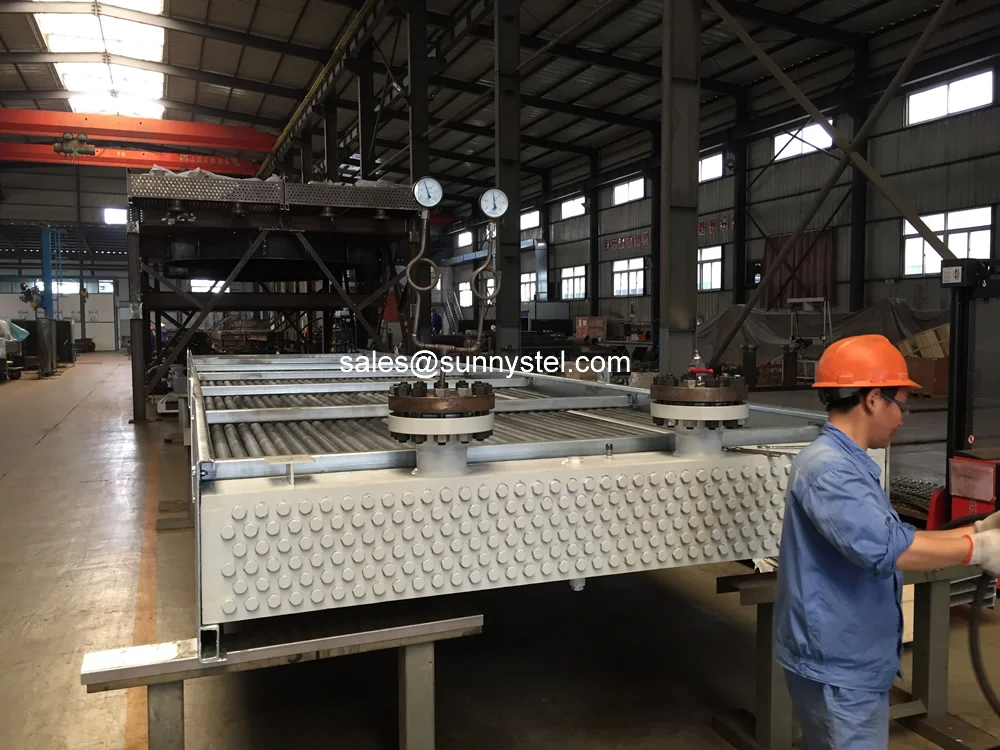
Seamless Long-length Tubes For Heat Exchangers
Ultra-long heat exchanger tubes are essential components in large-scale industrial applications, such as power generation, chemical processing, and oil refining.
Seamless Long-length Tubes For Heat Exchangers
Ultra-long heat exchanger tubes are essential components in large-scale industrial applications, such as power generation, chemical processing, and oil refining.
Ultra-Long Heat Exchanger Tubes are seamless steel tubes designed for enhanced heat transfer efficiency in large-scale heat exchangers, offering superior corrosion resistance and durability. Conforming to standards like ASTM A179, ASTM A213, and EN 10216-2, these tubes are ideal for power plant heat exchangers, petrochemical heat transfer, and other industrial applications. Their extended lengths (up to 24 meters) reduce joints, minimizing leakage risks and enhancing system reliability under pressures up to 25 MPa and temperatures up to 600°C.
Manufactured through advanced cold-drawing or hot-rolling processes, Ultra-Long Heat Exchanger Tubes are available in outer diameters from 6.35 mm to 101.6 mm and wall thicknesses from 0.5 mm to 7.0 mm. Their extended lengths, typically 12–24 meters, are tailored for large heat exchanger systems, reducing the need for welds and improving installation efficiency. Heat treatments such as annealing or normalizing enhance mechanical properties, ensuring resistance to pipeline wear, thermal fatigue, and stress corrosion cracking. The seamless design eliminates weld imperfections, critical for maintaining optimal heat transfer performance.
The chemical composition typically includes carbon (0.06–0.18%), manganese (0.27–0.63%), phosphorus (≤0.035%), sulfur (≤0.035%), and silicon (0.10–0.35%), with grades like ASTM A179, A213 T11, or EN 10216-2 P235GH providing excellent corrosion resistance and thermal conductivity. Rigorous testing, including tensile, hardness, flattening, flaring, and hydrostatic tests, ensures compliance with industry standards. Surface treatments like phosphating, passivation, or coatings (e.g., 3LPE, FBE) protect against corrosion, while U-bend or straight configurations support diverse heat exchanger designs.
These tubes are critical for shell-and-tube heat exchangers, condensers, and evaporators in power plants, refineries, and chemical processing facilities. Compared to standard-length tubes, ultra-long tubes offer reduced joint maintenance, improved flow dynamics, and enhanced thermal efficiency, making them suitable for handling corrosive fluids, high-pressure steam, or cryogenic applications. Their ability to resist scaling, oxidation, and thermal stress ensures reliable performance in extreme environments.
Ultra-Long Heat Exchanger Tubes address challenges like heat transfer efficiency, corrosion, and installation complexity in large-scale systems. Their seamless construction, extended lengths, and robust material properties make them a preferred choice for engineers seeking durable seamless heat exchanger tubes for demanding industrial applications, ensuring safety, efficiency, and extended service life.
These tubes are commonly fabricated from materials like stainless steel, known for its corrosion resistance and durability. For instance, ASTM A688 TP304/304L ultra-long stainless steel U tubes are specifically designed for high-performance condenser equipment. Manufacturing processes such as cold rolling and cold drawing are employed to achieve precise dimensions and superior surface finishes. Surface treatments like annealing and passivation further enhance corrosion resistance and quality.
The design of ultra-long heat exchanger tubes involves several critical factors:
Ultra-long lengths optimize heat transfer in large systems.
Coatings and alloy materials resist scaling and oxidation.
Withstands pressures up to 25 MPa for reliable performance.
Long lengths minimize welds, reducing leakage risks.
Fewer joints lower installation and maintenance costs.
Certified to ASTM, EN, and ASME standards for reliability.
| Feature | Ultra-Long Heat Exchanger Tubes | Standard Heat Exchanger Tubes |
|---|---|---|
| Material Type | Carbon/Low-Alloy Steel | Carbon/Low-Alloy Steel |
| Length Range | 12–24 m | 6–12 m |
| Tensile Strength (MPa) | 325–500 | 325–500 |
| Yield Strength (MPa) | 180–235 | 180–235 |
| Corrosion Resistance | High (with coatings) | High (with coatings) |
| Pressure Resistance | Up to 25 MPa | Up to 25 MPa |
| Cost | Moderate to High | Moderate |
| Applications | Large-scale heat exchangers, condensers | Standard heat exchangers, condensers |
| Key Advantage | Reduced joints, enhanced efficiency | Cost-effective for smaller systems |
| Manufacturing Process | Seamless, heat-treated, long-length | Seamless, heat-treated |
| Grade | C (%) | Si (%) | Mn (%) | P (% max) | S (% max) |
|---|---|---|---|---|---|
| ASTM A179 | 0.06–0.18 | - | 0.27–0.63 | 0.035 | 0.035 |
| ASTM A213 T11 | 0.05–0.15 | 0.50–1.00 | 0.30–0.60 | 0.025 | 0.025 |
| EN 10216-2 P235GH | 0.16 max | 0.35 max | 1.20 max | 0.025 | 0.020 |
Material: Commonly used materials are carbon steel, low alloy steel, stainless steel, copper, copper-nickel alloy, aluminum alloy, titanium, etc. In addition, there are some non-metallic materials, such as graphite, ceramics, polytetrafluoroethylene, etc. In the design, appropriate materials should be selected according to the working pressure, temperature and corrosiveness of the medium.
| Grade | Tensile Strength (MPa min) | Yield Strength (MPa min) | Elongation (% min) |
|---|---|---|---|
| ASTM A179 | 325 | 180 | 35 |
| ASTM A213 T11 | 415 | 205 | 30 |
| EN 10216-2 P235GH | 360–500 | 235 | 25 |
| Feature | Heat Exchange Tubes | Fluid Tubes | Superheater Tubes |
|---|---|---|---|
| Material Type | Carbon/Low-Alloy Steel | Carbon Steel | Carbon/Alloy Steel |
| Temperature Range | Up to 600°C | -40°C to 450°C | Up to 500°C |
| Tensile Strength (MPa) | 325–500 | 360–500 | 325–480 |
| Yield Strength (MPa) | 180–235 | 235–240 | 180–280 |
| Corrosion Resistance | High (with coatings) | Moderate (with coatings) | Moderate (with coatings) |
| Pressure Resistance | High (up to 25 MPa) | High (up to 30 MPa) | Moderate (up to 20 MPa) |
| Cost | Moderate | Moderate | Moderate |
| Applications | Heat exchangers, condensers | Fluid transport (oil, gas) | Superheaters, feedwater heaters |
| Key Advantage | High thermal conductivity | High-pressure fluid reliability | Thermal conductivity in boilers |
| Manufacturing Process | Seamless, heat-treated | Seamless, heat-treated | Seamless, cold-drawn |
Explore seamless heat exchange tubes with targeted long-tail keywords, covering specifications, applications, manufacturing, procurement, and dimensions for heat exchanger systems.
Note: Heat exchange tubes are designed for efficient heat transfer in demanding applications. For detailed specifications, refer to ASTM A179, A213, EN 10216-2, or contact a certified supplier.

Heat Exchange Tubes are vital for efficient heat transfer in power generation, petrochemical, and HVAC systems, ensuring optimal performance and durability.
Transfers heat in condensers and feedwater heaters.
Manages heat in chemical processing systems.
Facilitates heat transfer in heating and cooling units.
Handles corrosive fluids in heat exchangers.
Supports cooling systems in marine applications.
Recovers heat in industrial processes.

Tube bundles for air coolers offer efficient heat ...